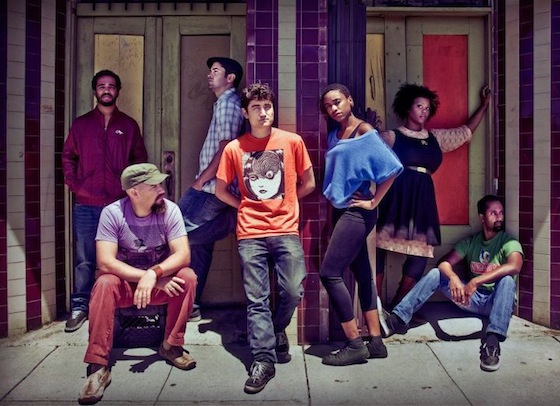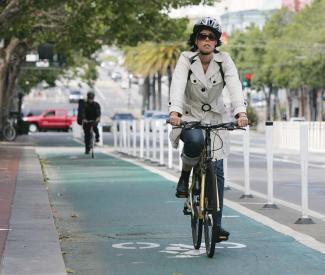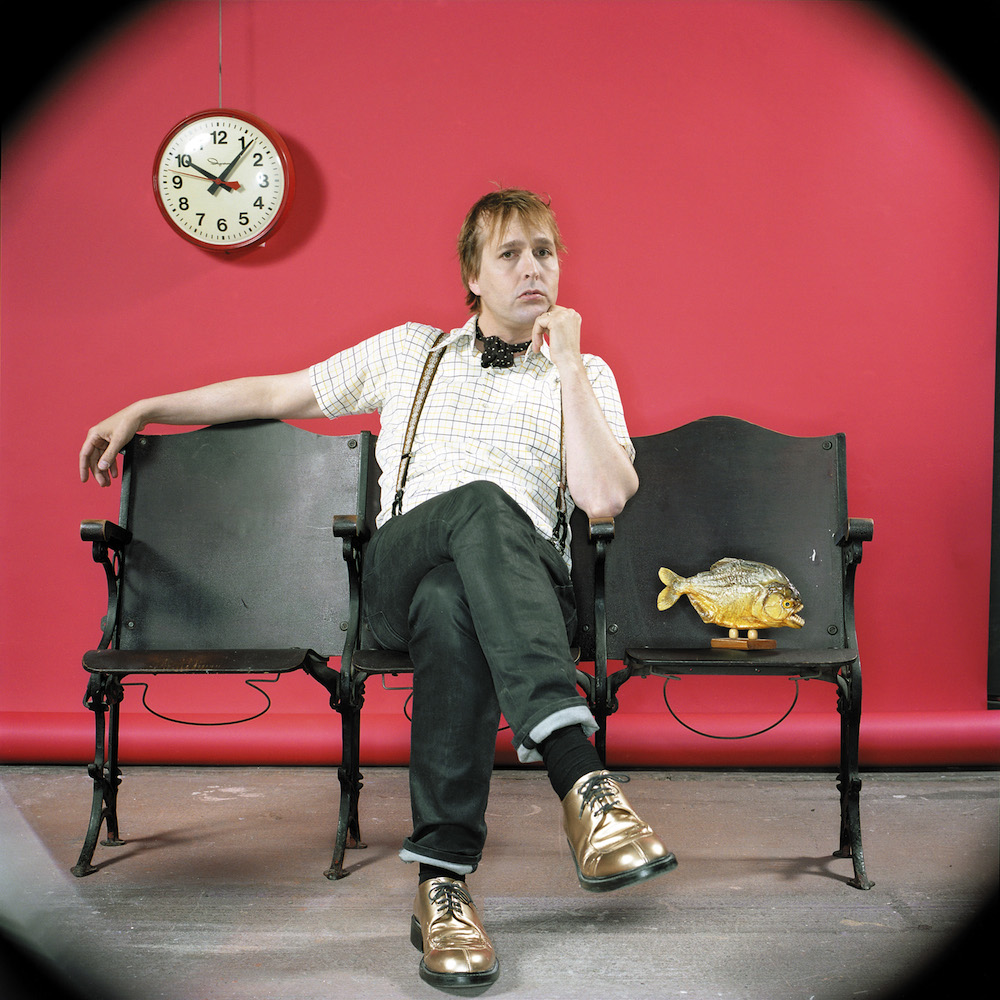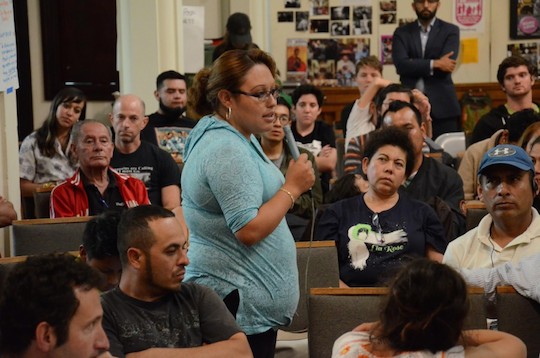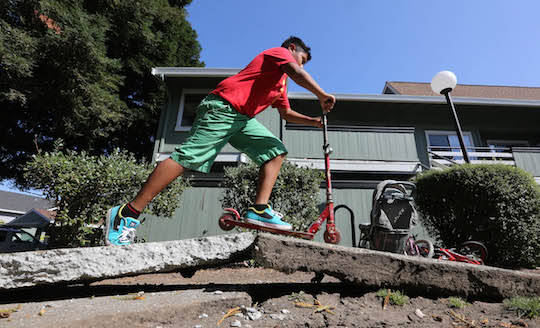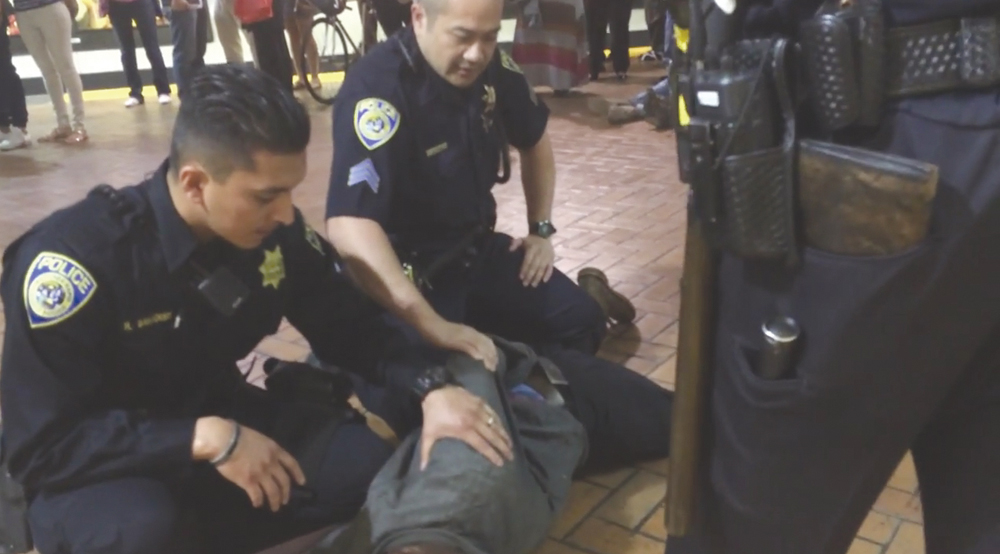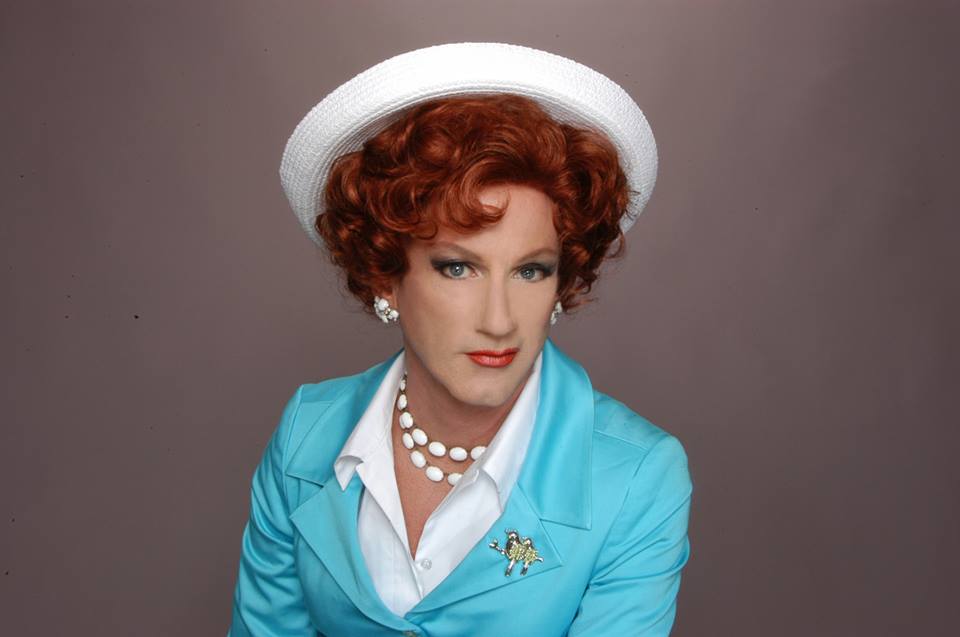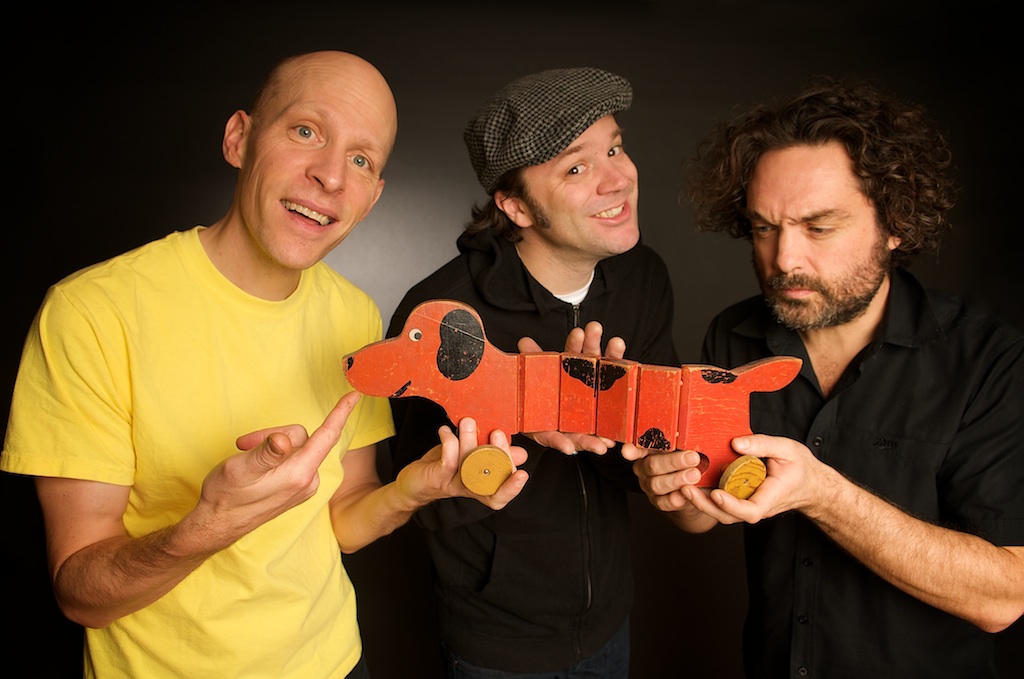What’s going on in Bay Area music these next three months? Glad you asked.
Like a daily multivitamin wards off the sniffles, getting the SFBG’s official recommended dose of live shows is crucial to maintaining optimal mental health, fun levels, and skin tone, especially as the days get shorter and the weather turns ever-so-slightly cooler.
Here’s your musical agenda from Labor Day through Thanksgiving, with highlights from our favorite fall festivals (see this week’s issue for lots more).
Aug. 28 Black Cobra Vipers with French Cassettes The Chapel, SF. www.thechapelsf.com
Aug. 29 Blind Willies Viracocha, SF. www.viracochasf.com
Aug. 30 Mistah F.A.B. Slim’s, SF. www.slimspresents.com
Aug. 31 LIVE 105’s Punk Rock Picnic with The Offspring, Bad Religion, Pennywise, and more. Are you a late-thirties/early-forties punk rock guy or gal who can’t agree on much of anything with your 13-year-old these days? Doesn’t get much better than this lineup. Bonus points for screaming along to all the swearing on The Offspring’s “Bad Habit.” Shoreline Amphitheatre, Mountain View. www.theshorelineamphitheatre.com
Sept. 1 Hiero Day. Souls of Mischief, Del, and the rest of the guys have promised some pretty big guest stars at this week’s fest, but even without ’em — a free block party with beer from Linden Street Brewery and music from some of the Bay Area’s best underground rappers? Guests, schmests. Downtown Oakland, www.hieroday.com
Sept. 2 Ghost & Gale Brick and Mortar, SF. www.brickandmortarmusic.com
Sept. 3 Joey Cape Thee Parkside, SF. www.theeparkside.com
Sept. 4 Carletta Sue Kay Hemlock Tavern, SF. www.hemlocktavern.com
Sept. 4-13 Mission Creek Oakland Music & Arts Festival. With a range of heavy hitters — from B. Hamilton and Bill Baird to Whiskerman — this is a showcase of the fertile ground that is Oakland’s indie rock scene right now, most with door prices you’re not likely to see from these bands again. Venues throughout Oakland,www.mcofest.org.
Sept. 5 Sam Chase with Rin Tin Tiger Uptown, Oakl. www.uptownnightclub.com
Sept. 6 Bart Davenport, Foxtails Brigade, more Block Party, downtown Oakland, www.mcofest.org
Sept. 7 Coheed and Cambria, Fox Theater, Oakl. www.thefoxoakland.com
Sept. 8 The Rentals Slim’s, SF. www.slimspresents.com
Sept. 9 Wild Eyes Knockout, SF. www.theknockoutsf.com
Sept. 10 Kyrsten Bean New Parish, Oakl., www.thenewparish.com
Sept. 11 Sonny & The Sunsets Eagle Tavern, SF. www.sf-eagle.com
Sept. 11-14 Downtown Berkeley MusicFest. A range of bluesy, folky, dancey bands from all over the Bay — especially recommended: the First Person Singular presentation of Beck’s Song Reader Sept. 11 and The Parmesans at Jupiter Sept. 14. Venues all over Berkeley, www.downtownberkeleymusicfest.org
Sept. 12-14, 15th Annual Electronic Music Festival Brava Theater Center, SF. www.sfemf.org
Sept. 13 The Breeders Fillmore, SF. www.thefillmore.com
Sept. 13-14 Forever Never Land, “California’s only 21+ music festival,” Avila Beach Golf Resort, www.foreverneverland.us
Sept. 15 Vulfpeck Brick and Mortar, SF. www.brickandmortar.com
Sept. 16 Lil Dicky Independent, SF. www.theindependentsf.com
Sept. 17 Anais Mitchell The Chapel, SF. www.thechapelsf.com
Sept. 18 Silent Comedy and Strange Vine Bottom of the Hill, SF. www.bottomofthehill.com
Sept. 19 Blake Mills, The Chapel, SF. www.thechapelsf.com
Sept. 20 Old Crow Medicine Show The Masonic, SF. www.masonicauditorium.com
Sept. 20-21 Berkeley World Music Festival All over Berkeley, www.berkeleyworldmusic.org
Sept. 20-21 Russian River Jazz & Blues Festival, with Larry Graham & Graham Central Station, more. www.russianriverfestivals.com
Sept. 21 Oakland Music Festival with The Coup, Kev Choice, more Downtown Oakland, www.oaklandmusicfestival.com.
Sept. 22 La Roux Fox Theater, Oakl. www.thefoxoakland.com
Sept. 23 Cello Joe The Chapel Bar, SF. www.thechapelsf.com
Sept. 24 Skeletonwitch, Black Anvil DNA Lounge, SF. www.dnalounge.com
Sept. 25-28 Philip Glass’ Days and Nights Festival Henry Miller Memorial Library, Big Sur; Sunset Cultural Center, Carmel-by-the-Sea, www.daysandnightsfestival.com
Sept. 26 Bob Mould Fillmore, SF. www.thefillmore.com
Sept. 27 Wu-Tang Clan Warfield, SF. www.thewarfieldtheatre.com
Sept. 27 Redwood City Sala Festival Courthouse Square, Redwood City, www.redwoodcity.org
Sept. 28 Sam Smith Fox Theater, Oakl. www.thefoxoakland.com
Sept. 29 Motown on Mondays Legionnaire Saloon, Oakl. www.legionnairesaloon.com
Sept. 30 Pixies The Masonic, SF. www.masonicauditorium.com
Oct. 1 Rhymesayers presents Brother Ali, Bambu Bottom of the Hill, SF. www.bottomofthehill.com
Oct. 2 Lorde Greek Theatre, Berk. www.thegreektheatreberkeley.com
Oct. 3-5 Berkeley Hawaiian Music Festival Freight and Salvage, Berkl. www.thefreight.org.
Oct. 3-5 Hardly Strictly Bluegrass Festival, Golden Gate Park, SF. www.hardlystrictlybluegrass.com
Oct 3-5 TBD Festival. Emerging Bay Area acts like 8th Grader mingle with the big kids (Blondie, Moby, Danny Brown, Kurt Vile) at this seventh annual celebration of “music, art, design, and food.” A low-key vibe and great chance to see some huge acts in a seemingly unlikely location. Riverfront, West Sacramento. www.tbdfest.com.
Oct. 4 Cibo Matto The Chapel, SF. www.thechapelsf.com
Oct. 5 Bombay Bicycle Club Warfield, SF. www.thewarfieldtheatre.com
Oct. 6 The War on Drugs with Cass McCombs Fillmore, SF. www.thefillmore.com
Oct. 7 Thurston Moore Great American Music Hall, SF. www.slimspresents.com
Oct. 8 The King Khan & BBQ Show Great American Music Hall, SF. www.slimspresents.com
Oct. 9 Imelda May Fillmore, SF. www.thefillmore.com
Oct. 10 Too Short Shoreline Amphitheatre, Mountain View. www.shorelineamphitheatre.com
Oct. 11 Pomplamoose Fillmore, SF. www.thefillmore.com
Oct. 12 Jack Beats Mezzanine, SF. www.mezzaninesf.com
Oct. 13 Mutual Benefit Independent, www.theindependentsf.com
Oct. 14-15 Culture Collide. This new-to-the-Bay-Area party has been rocking LA for the past few years, but it seems to have taken on an appropriately Mission-esque flavor for its first Mission takeover: Local kids like Grmln alongside national acts like Cloud Nothings and Clap Your Hands Say Yeah alongside a whole host of buzzy Korean, Australian, and UK bands? Yeah, we’re there. Up and down Valencia in the Mission, with multiple stages including the Elbo Room. www.culturecollide.com
Oct. 15 Of Montreal Great American Music Hall, SF. www.slimspresents.com
Oct. 16 Russian Red Independent, SF. www.theindependentsf.com
Oct. 17 Pup Brick and Mortar Music Hall, www.brickandmortarmusichall.com
Oct. 18-19 Treasure Island Music Festival, with Outkast, Massive Attack, more Treasure Island. www.treasureislandfestival.com
Oct. 20 Kimbra Independent, SF. www.theindependentsf.com
Oct. 21 Melvins Great American Music Hall, SF. www.slimspresents.com
Oct. 22 Kat Edmonson Great American Music Hall, SF. www.slimspresents.com
Oct. 23 The Blank Tapes Brick and Mortar Music Hall, www.brickandmortarmusichall.com
Oct. 24 Foxygen Fillmore, SF. www.thefillmore.com
Oct. 25 Titan Ups and Carletta Sue Kay DNA Lounge, SF. www.dnalounge.com
Oct. 26 Bridget Everett Independent, SF. www.theindependentsf.com
Oct. 27 Warpaint Regency Ballroom, SF. ww.theregencyballroom.com
Oct. 28 Broken Bells The Masonic, SF. www.masonicauditorium.com
Oct. 29 King Tuff Great American Music Hall, SF. www. slimspresents.com
Oct. 30 Tycho Fox Theater, Oakl. www.thefoxoakland.com
Oct. 31 LIVE 105’s Spookfest with Chromeo, Alesso, more Oracle Arena, Oakl., www.live105.cbslocal.com
Nov. 1 Stone Foxes with Strange Vine The Chapel, SF. www.thechapelsf.com
Nov. 2 Citizen Cope Catalyst, Santa Cruz. www.catalystclub.com
Nov. 3 The Black Keys Oracle Arena, Oakl., www.coliseum.com
Nov. 4 Frankie Rose with Cold Beat Bottom of the Hill, SF. www.bottomofthehill.com
Nov. 5 Finch, Maps & Atlases Slim’s, SF. www.slimspresents.com
Nov. 6 Bleachers Independent, SF. www.theindependent.sf.com
Nov. 7 Slowdive Warfield, SF. www.thewarfieldtheatre.com
Nov. 8 Shovels & Rope Fillmore, SF. www.thefillmore.com
Nov. 9 Mirah Independent, SF. www.theindependentsf.com
Nov. 10 Psychedelic Furs, Lemonheads Fillmore, SF. www.thefillmore.com
Nov. 11 Mac DeMarco Fillmore, SF. www.thefillmore.com
Nov. 12 Shakey Graves Independent, SF. www.theindependentsf.com
Nov. 13 Generationals The Chapel, SF. www.thechapelsf.com
Nov. 14 Deltron 3030 Catalyst, Santa Cruz. www.catalystclub.com
Nov. 15 J. Mascis Independent, SF. www.theindependentsf.com
Nov. 16 Hot Water Music Slim’s, SF. www.slimspresents.com
Nov. 17 Culture Club Fox Theater, Oakl. www.thefoxoakland.com
Nov. 18 The 1975 The Masonic, SF. www.masonicauditorium.com
Nov. 19 Har Mar Superstar Bottom of the Hill, SF. www.bottomofthehill.com
Nov. 20 Minus the Bear Slim’s, SF. www.slimspresents.com
Nov. 21 Seu Jorge Bimbo’s 365 Club, SF. www.bimbos365club.com
Nov. 22 Peanut Butter Wolf Brick and Mortar Music Hall, www.brickandmortarmusichall.com
Nov. 23 Lucero Slim’s, SF. www.slimspresents.com






